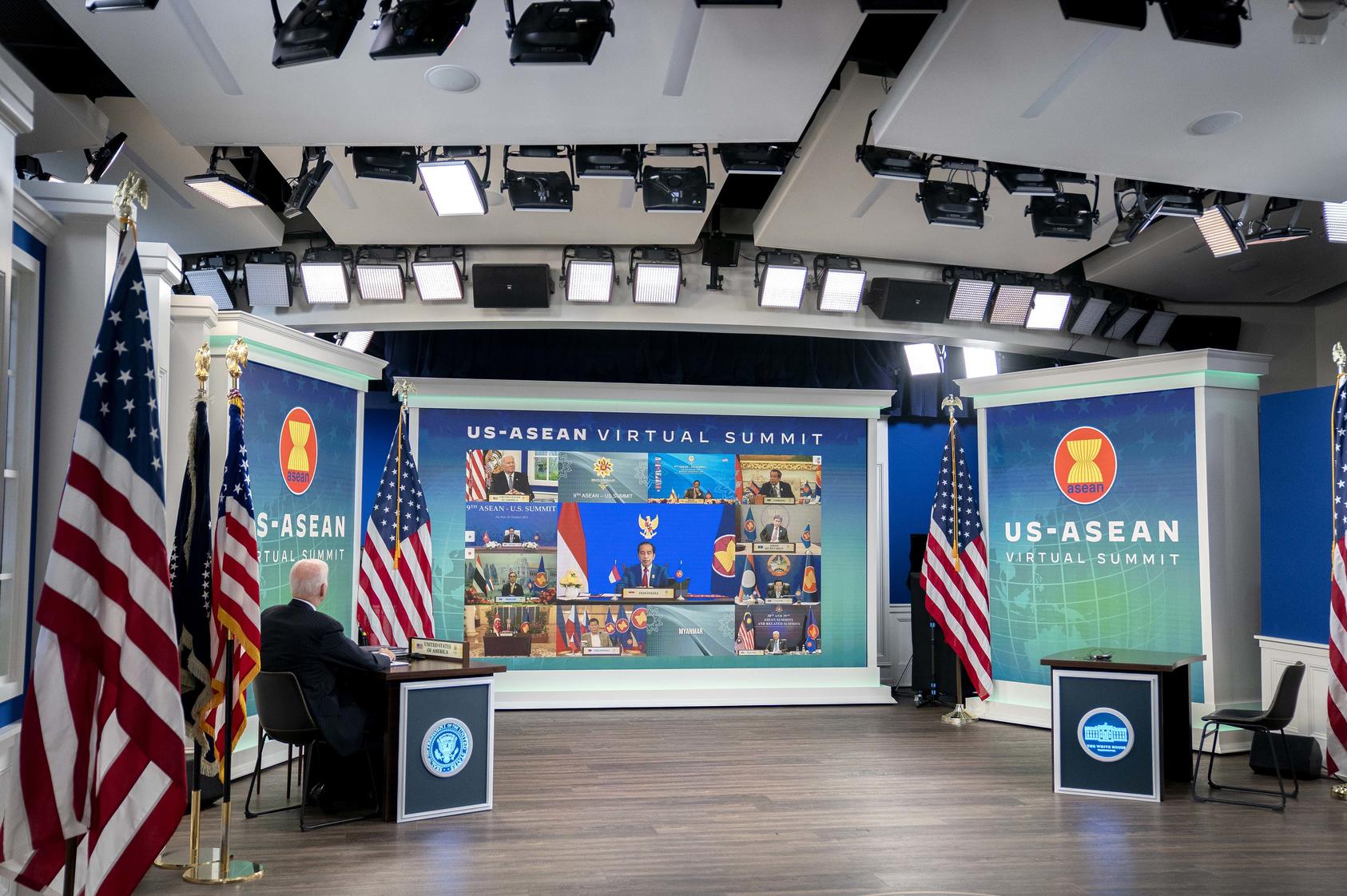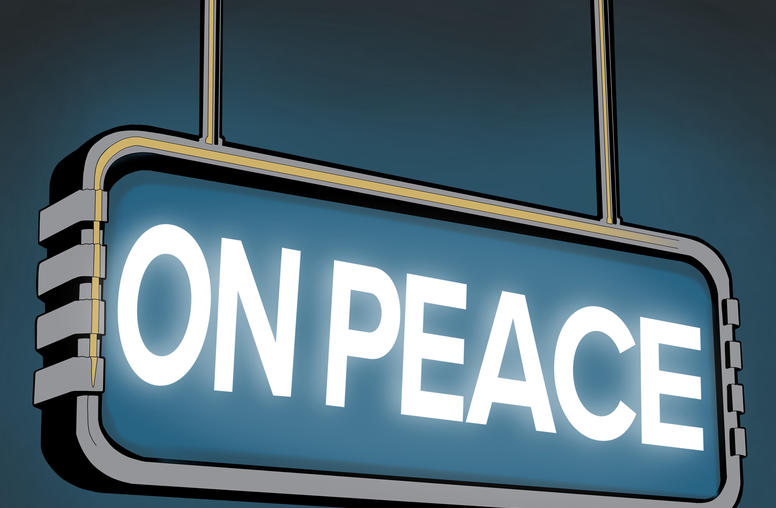U.S.-Vietnam Partnership Goes Beyond Strategic Competition with China
Hanoi’s ‘multi-directional’ foreign policy provides opportunities for a stronger ASEAN and more trusted U.S.-Vietnam relationship.
When the Association of Southeast Asian Nations (ASEAN) was founded in 1967, one of its initial goals was to contain the threat of communism during the Vietnam War. It is a remarkable turn of history that 55 years later, Vietnamese Prime Minister Phạm Minh Chính is coming this year to Washington for the ASEAN leaders summit with President Biden. Vietnam’s accession to ASEAN in 1995 — the same year when Hanoi and Washington normalized relations — was the first big step of Hanoi’s “multi-directional” foreign policy. As the Biden administration identifies Vietnam as one of the key countries in its Indo-Pacific Strategy, it needs to recognize Hanoi’s preference for multilateralism in its engagement policy.

Vietnam’s multi-directional policy originally aimed to enlarge its network of friends to safeguard against uncertainty after the Cold War, when it had depended excessively on the Soviet Union. ASEAN membership marked the beginning of Vietnam’s regional and global integration, contributing to its economic successes over the past three decades. Hanoi’s strategic direction to become a regional middle power is heavily centered on this multilateral approach.
Although bilateral U.S.-Vietnam exchanges have increased significantly in the past few years, direct contact is not the only way to deepen the partnership. Indirect channels via regional arrangements such as ASEAN and U.S. allies and partners in the region offer alternative spaces for dialogue and cooperation.
The Web of Cooperation
Despite recent criticism of ASEAN’s irrelevance with the return of great power competition, regional platforms remain tremendously important. Within ASEAN, Vietnam can make its voice heard, connect with like-minded partners and gain international support in countering China’s increasing aggression in the East (“South China”) Sea. ASEAN’s various expanded forums, such as the East Asia Summit and the ASEAN Regional Forum, provide ideal platforms to discuss issues which might be deemed too sensitive bilaterally.
For Hanoi, multilateralism always comes with trade. The country has a trade-to-GDP ratio of nearly 200 percent, one of the highest in the world. Vietnam is a party to 15 free trade agreements (FTAs), including the high-standard 2019 EU-Vietnam FTA and the 2018 Comprehensive and Progressive Agreement for Trans-Pacific Partnership.
These arrangements, both economic and political, provide platforms for Washington to work with Vietnam on matters of shared interest, as well as the opportunity to enhance and shape a rules-based regional order. Unfortunately, cooperating with regional multilateral institutions has not been a priority for U.S. foreign policy since the Obama administration. The United States also seems to lack effective regional trade and economic cooperation policies after its withdrawal from the Trans-Pacific Partnership. Although President Biden has emphasized re-engagement with Asia, this has mostly occurred through smaller networks of partners, such as the Quad.
U.S. regional allies, with which Hanoi has close relations, offer a second path to enhancing U.S. cooperation with Vietnam. Japan and South Korea are Vietnam’s largest and second-largest sources of investment, respectively. In the past decade, both countries have expanded security cooperation with Hanoi, perhaps with an eye toward China’s regional ambitions. Tokyo gifted Hanoi six used patrol vessels in 2013 and provided loans worth $338 million to build another six in 2017. In November 2021, during Chính’s visit to Japan, both sides agreed to “accelerate consultations for the transfer of specific equipment including naval vessels and related equipment.”
Less publicly, South Korea has also reinforced defense ties with Vietnam over the past few years, as have India and Australia. These strong relations provide an effective backchannel for Hanoi to indirectly cooperate with Washington on areas such as intelligence sharing and maritime security.
The rationale is not just to strengthen the Vietnam-U.S. bilateral relationship, but to engage with a network of like-minded countries that share mutual interests. To paraphrase a recent RAND report, the United States needs to thicken the web of cooperation with Vietnam in the Indo-Pacific to include regional foreign affairs and defense dialogues, joint military training and exercises, arms sales and transfers, and/or new bilateral or multilateral agreements. In the long term, this will be more sustainable and effective than the quid-pro-quo approach of China’s Belt and Road Initiative.
Vietnam’s China Dilemma
Despite Vietnam’s rapprochement with the United States, China remains the “top priority” of Vietnamese foreign policy, in words attributed to Foreign Minister Bùi Thanh Sơn. Beijing has many points of leverage at its disposal to induce or coerce Hanoi. China’s decision to close border gates in late 2021 caused great damage to Vietnamese exporters. Despite tensions on sovereignty issues, the Vietnamese and Chinese Communist parties maintain an intimate relationship due to their ideological alignment. Beijing wisely exploits the Vietnamese party’s fear of regime change to shape a wedge strategy toward the Vietnam-U.S. partnership, warning leaders in Hanoi of potential “color revolutions.”
Being a neighbor of a powerful nation, Vietnam is rightly concerned about the repercussions of being seen as “ganging up” on China. As the country has faced multiple invasions from China, the most recent in 1979, there is always a security concern emanating from the northern border. This might explain why Vietnam and the United States have not upgraded their relationship to the “strategic partnership” level, although the matter has been raised since 2018. Hanoi does not want to be caught in the crossfire of great power competition.
Shared Interests as the Basis for Friendship
There is no doubt that U.S.-Vietnam relations are at the best stage since the end of the Vietnam War. Despite the war’s legacy, Vietnamese hold one of the most favorable views on the United States in Asia. Vietnam is the only Southeast Asian country in the top 10 of U.S. trading partners, and American manufacturers increasingly consider Vietnam as an alternative destination to China. Strategic interests have converged significantly in the last decade, leading to expanded security cooperation signaled by the lift of the U.S. embargo on lethal arms sales in 2016. Hanoi is an ardent supporter of a rules-based regional order as well as the U.S.-led free and open Indo-Pacific Strategy. Although the scenario of a formal alliance is unlikely, the upward trajectory is clear. When visiting Vietnam in August 2021, Vice President Kamala Harris indicated that both sides were working toward a strategic partnership.
U.S. rapprochement with Vietnam is more than a way to “contain” China (as if this could be done). A long-term, stable friendship should not be based solely on mutual concern about a rising regional hegemon. Washington should not only focus on economic and security partnerships but needs to support Vietnam in areas that it is lagging behind, particularly institutional reforms and the increased repression of civil society. A more democratic and open Vietnam will not only be good for the Vietnamese but a more trusted regional partner. A friendship based on shared values is much more sustainable than the one based purely on security and economic interests.
Certainly, this is not easy, because the United States often promotes democracy in principle while compromising it in practice. But helping Vietnam improve its record on human rights and democracy need not sound like a “color revolution,” as the recent experience of labor reforms in the EU-Vietnam Free Trade Agreement indicates. A multilateral U.S. approach, including trade and strategic cooperation, can avoid key regional pitfalls and bring about substantive progress in the bilateral relationship.
Nguyễn Khắc Giang is a Ph.D. candidate in political science and international relations at the Victoria University of Wellington, New Zealand.



